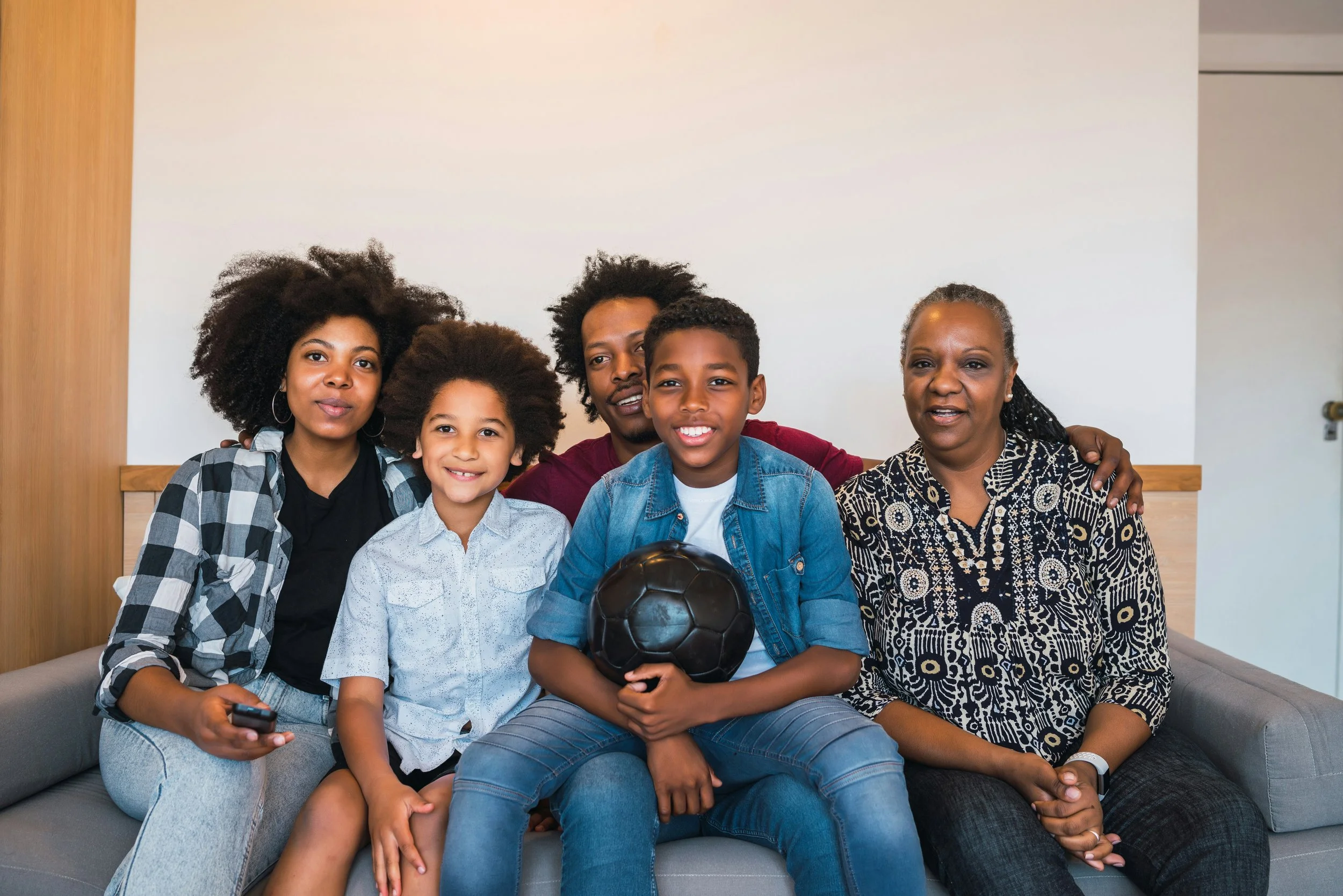
My Approach
Although I draw on a variety of theories to guide my therapy, I describe my therapy as:
1. Emotionally-focused
2. Culturally-attuned
3. Developmentally-applied
AND
4. Trauma-informed
Emotionally-focused therapy places heavy emphasis on our attachment system. This system provides a mental map of when we can let our guard down and when we need to seek safety. Specifically, this map tells us who we can turn to for safety and whether or not we need to fight, flee, or freeze when we feel threatened.
Being culturally-attuned, I listen to how your family and larger systems influence what is important to you. For example, some families prioritize structure while others prioritize flexibility. Family conflict happens when there’s a lack of understanding of why these values matter. Understanding these values, on an individual level, will help you to find better incongruence within yourself.
Being developmentally-applied, I am interested in learning about each person’s child development: How easy did learning come to you? What was your social situation like growing up? Who did you turn to when distressed? Did you or any of your family members struggle with any of the 10 adverse childhood experiences (ACES)? The ways in which you developed as a child have a strong correlation with how you you navigate the world today.
Finally, being trauma-informed, I am interested in learning about the ways trauma has impacted your life. Anything that overwhelms your nervous system, whether through a single difficult experiences or repeated exposure, can cause a traumatic response in our nervous system. The ABC-X model, gives a simple explanation to how trauma works: (A) Stressor Event + (B) Individual and Family Resources + (C) Perception of the Stressor = (X) Level of Crisis. If trauma has enter into your life, like it has for many, I am here to help you heal.
Whatever challenge you are facing, I’m here to help. I hope that, together, we can help you find “your oasis” - a place where you feel loved, competent, hopeful, connected, energetic, and fulfilled. I’m here to help you every step of the way.
Warmly,
Dr. H
How does culture and attachment intersect?
Our upbringing impacts our attachment system and our attachment system then shapes our upbringing. For example, families who might be described as “loud” or “boisterous” may, in fact, either have a secure attachment style or they may lean towards a more preoccupied one - where there is low emotional tolerance so that problems must be addressed immediately. On the other hand, some families are described as being more “separate” or “detached.” They also may either have a secure attachment style or they may, in fact, lean more towards avoidance. Although the surface level behavior may look the same for someone who is securely and insecurely attached, the real difference is what the individuals are feeling on the inside. Are they feeling safe and calm when separate from another person or engaging with someone or are they feeling tense, anxious, impatient, or angry on the inside? One of 4 things tend to happen as we grow: 1. We keep our family culture and expect others to assimilate to it (a melting pot strategy), 2. We keep our family culture, but don’t want others to adopt it (a segregation strategy), 3. We discard our family culture and discard the culture of others (marginalization), and 4. We keep what we love about our culture, discard what we don’t like, and integrate what we love of other’s culture (integration). It is well-known that families who adopt an integration strategy have the best mental health outcomes. They are able to hold onto what is good about their family of origin AND incorporate new values, traditions, and languages into their lives.
Why is Attachment Theory so Important?
Attachment theory isn’t just a “good idea” - it is an empirically validated truth that describes how we derive safety from our level of connection with ourselves and others. From the day we are born, our brain begins a coding process, where we learn through association. As we grew, a map of who is safe and who isn’t begins to develop and patterns for how we deal with that lack of safety emerge. We know through research that those who develop a map of insecurity tend to either withdraw, pursue, or freeze in their relationships. Understanding what your attachment style is will help you understand many of your reactions and behaviors. For example, when things get hard, what is your tendency? To face the challenge head on or to delay and procrastinate? When you feel overwhelmed by your responsibilities, do you tend to lash out and criticize or tell yourself “it’s no big deal?” Do you prefer to keep things to yourself or speak your mind? When things get heated, do you want to resolve the problem right away and “move on” or would you rather separate and spend time alone? On the surface, these types of behavior may appear innocuous, but they may be a small part of larger attachment system that tells you to either fight, run, or freeze when you are feeling unloved, unappreciated, scared, unsupported, not good enough, or not important.
How can understanding development help us?
When we don’t understand development, we might think that others are being lazy or that they “don’t care,” when, in reality, they are simply under- or overdeveloped in one or more areas. Development isn’t just an individual process, but a process that takes place within the context of others. Although there may be an infinite amount of ways in which we finally arrive at a ideal place in life, we also know that development is an never-ending process. We know that most adults, for example, need to learn how to: 1. Receive warmth and validation from others, 2. Give warmth and validation to others, 3. Manage difficult emotions such as bored, frustration, and hopelessness, 4. Get good sleep, 5. Get adequate nutrition, 6. Get adequate physical activity, 7. Make and maintain friendships, 8. Name and communicate emotions to their loved ones, 9. Being honest even when its difficult, 10. Set boundaries, 11. Be vulnerable, 12. Communicate effectively, 13. Learn, 14. Work hard, 15. Sustain attention, and 16. Provide financially and emotionally for their families (among many other things). Sometimes we may develop quickly in one area and lag behind in another. Both being “ahead of the pack” or “behind” our peers can be challenging in their own right.
About Me
I have been doing individual therapy, marriage counseling, and family therapy since graduating with my Master’s in 2013. I understand the role of attachment in marriage, trauma’s impact on the body and relationships, and in ways to heal from past trauma. I am certified in Lifespan Integration, a gentle approach to healing attachment trauma.
Pricing & Schedule
Cost: 60 minute intakes are $180. Each session after that is $150.
Schedule: I work Wednesday - Friday, 9am-5pm MST.
Insurances Accepted: Aetna, Cigna, and United Healthcare Insurance.
Location: I am located at 972 E Chambers St. in South Ogden, UT 84040
Contact Information: Call or text me at 801-252-5344 or email me drharalson@oasisft.com
Our services
-

Marriage Therapy
-

Individual Therapy
-

Family Therapy
-

Child-centered Therapy
-

Parenting Consultations
-

Lifespan Integration


